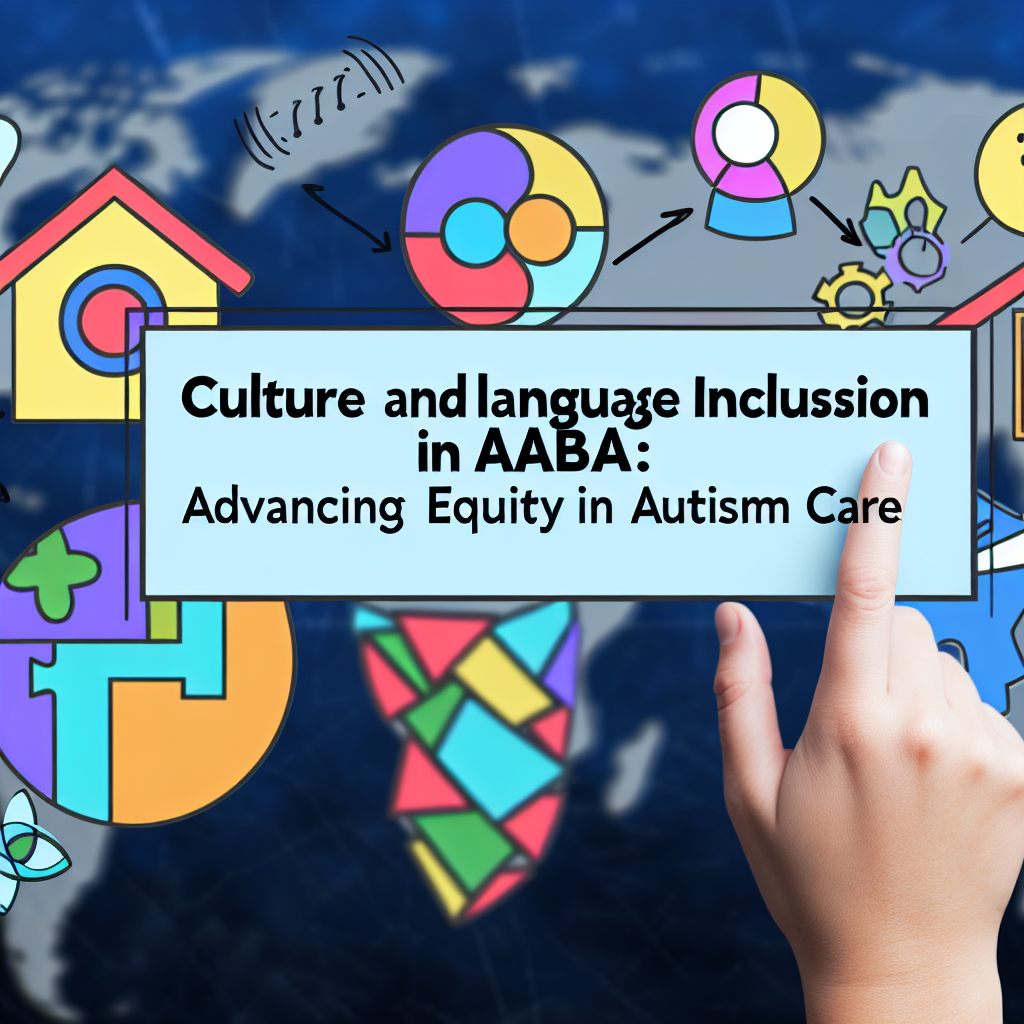Culture and Language Inclusion in Applied Behavior Analysis: A Path to Equitable Care
Introduction
Applied Behavior Analysis (ABA) is one of the most widely used interventions for autistic individuals. However, disparities in access and service quality continue to affect marginalized communities, particularly those from racially, culturally, and linguistically diverse backgrounds.
In their article, "Culture and Language Inclusion in the Practice of Applied Behavior Analysis: Next Steps for Improving Outcomes for Autistic Clients", Crystal D. Hernandez, Natalie F. Williams Awodeha, and Michael J. Cameron (2023) discuss how ABA services can become more inclusive, equitable, and culturally responsive. Their research explores the barriers faced by autistic individuals from diverse backgrounds and provides actionable solutions for behavior analysts to implement.
This blog post summarizes key findings from their work and provides practical steps to enhance cultural and language inclusion in ABA services.
Understanding the National CLAS Standards
To better meet the needs of diverse populations, ABA practitioners should look to the National Standards for Culturally and Linguistically Appropriate Services (CLAS). These guidelines, established by the U.S. Department of Health and Human Services, focus on ensuring equitable and culturally appropriate care across healthcare fields, including ABA.
The CLAS standards emphasize three key areas:
- Governance, Leadership, and Workforce – Encouraging leadership to prioritize diversity and inclusion and equipping clinicians with the necessary skills.
- Communication and Language Assistance – Providing language accessibility through translation services and multilingual materials.
- Engagement, Continuous Improvement, and Accountability – Creating policies that promote culturally sensitive care and tracking progress toward equitable service provision.
By incorporating these standards, ABA providers can build a more inclusive framework that improves client outcomes and caregiver engagement.
The Role of Culture in ABA
As U.S. demographics continue to evolve, ABA must shift towards cultural humility rather than merely cultural competence. The difference? Cultural competence suggests an end goal of mastery, while cultural humility involves ongoing self-reflection and a commitment to learning from diverse communities.
Key components of Diversity, Equity, and Inclusion (DEI) in ABA include:
- Diversity – Recognizing the psychological, physical, and social differences that exist across racial, ethnic, and linguistic backgrounds.
- Equity – Addressing barriers to ensure all families receive quality services, particularly those from historically marginalized groups.
- Inclusion – Creating an environment where all voices, including those of non-native English speakers and underrepresented communities, are valued in the decision-making process.
ABA providers who prioritize these principles can enhance client engagement and improve treatment effectiveness.
Disparities in Access to ABA Services
Research consistently highlights racial and ethnic disparities in both autism diagnosis and access to ABA services. Hernandez et al. (2023) identify several key barriers faced by marginalized families:
- Delays in Autism Diagnosis – White children are more likely to receive early autism diagnoses, while Black and Latinx children often experience significant delays due to language barriers and provider biases.
- Challenges in Receiving Quality ABA Services – White families are statistically more likely to receive coordinated and family-centered care compared to Latinx and Black families.
- Institutional Racism in Healthcare – Implicit biases among healthcare providers often result in lower-quality service delivery for racially and linguistically diverse families.
- Limited Provider Understanding of Cultural Values – Many ABA professionals lack training in cultural responsiveness, leading to disconnects between service providers and families.
- Language Barriers – Non-English-speaking households have lower rates of autism diagnosis and intervention services due to inadequate language support in medical and educational settings.
To bridge these gaps, behavior analysts must take proactive steps to make ABA services more accessible to all.
Recommendations for Practice Modifications
Hernandez et al. (2023) provide a roadmap for ABA professionals to enhance cultural and linguistic responsiveness in practice. Here are seven key recommendations to consider:
- Provide Multilingual Intake Forms & Communication Tools – Ensure that intake paperwork and parent resources are available in multiple languages.
- Implement Professional Translation & Interpretation Services – Offer real-time translation during assessments and meetings to allow better family participation.
- Train Providers in Cultural Humility – Develop training programs that help practitioners recognize cultural biases and improve communication skills with diverse clients.
- Increase Diverse Representation in ABA Workforce – Recruit and mentor practitioners from underrepresented communities to build a workforce that reflects the clients it serves.
- Reform BCBA & RBT Training Requirements – Incorporate cultural humility, linguistic inclusion, and DEI frameworks into certification programs to better prepare future practitioners.
- Develop Mentorship Programs for Underrepresented Providers – Establish professional support networks to retain and promote behavior analysts from diverse backgrounds.
- Enhance Community Outreach Efforts – Partner with culturally diverse organizations to improve ABA awareness and accessibility in underserved areas.
By implementing these strategies, ABA professionals can make meaningful progress toward culturally responsive care.
Conclusion: Moving Towards an Inclusive ABA Practice
The future of ABA hinges on our ability to provide equitable and culturally responsive services to all families. Research by Hernandez, Williams Awodeha, and Cameron (2023) reinforces the urgency of this issue while outlining clear steps for behavior analysts to integrate cultural and linguistic inclusion into their practice.
Behavior analysts must commit to continuous education, self-reflection, and active efforts to dismantle barriers in autism care. By following the CLAS Standards, improving workforce diversity, and addressing systemic racism in healthcare, we can help ensure that all autistic individuals receive the high-quality support they deserve.
To learn more, read the full article: Hernandez, C. D., Williams Awodeha, N. F., & Cameron, M. J. (2023). Culture and Language Inclusion in the Practice of Applied Behavior Analysis: Next Steps for Improving Outcomes for Autistic Clients. https://doi.org/10.1007/s40617-023-00791-3.



